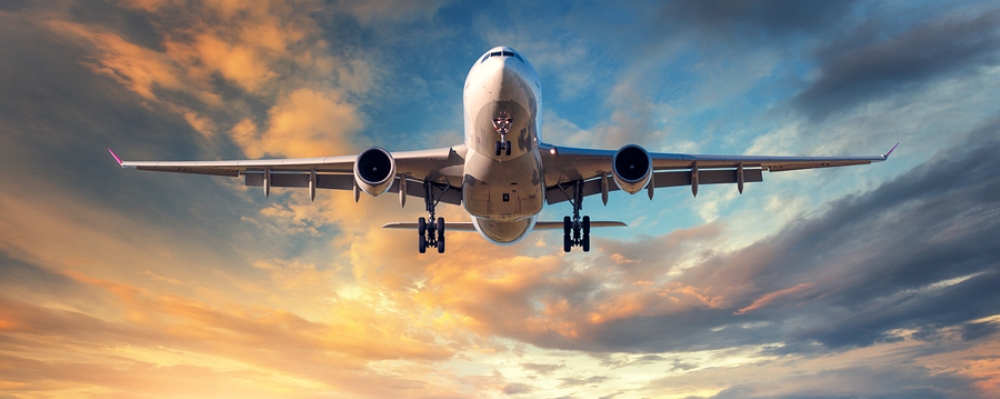
When the first successful powered aircraft lifted off the ground in 1903 at Kitty Hawk, the world was probably not yet thinking about a future where planes were a primary form of global transportation.
Fast forward to today, when there are more than 44,000 commercial flights per day carrying 2.7 million passengers. While planes are dramatically more sophisticated than the first generation of flyers, technology continues to improve even with the highly advanced aircraft flown by experienced pilots like William Matheuszik. The aviation industry is investing billions in research and development every year – more than $3 billion from Boeing alone.
But it's not just the planes that are evolving, including the use of lighter composite materials in aerospace technology. William Matheuszik has experienced the technological changes in aviation throughout his decades of experience flying, he has graciously taken the time to explain the most significant changes in aviation.
According to William Matheuszik, the aviation industry is seeing the benefits of technological advances from improved aircraft safety measures to electronic training for staff, further stating that these benefits are also being passed along to the overall passenger experience.
Personnel Training is Going Digital
Pilot training has historically been confined to using a flight simulator at an off-site location, but that is now being streamlined with virtual reality. William Matheuszik states it might become more commonplace for pilots in training to strap on virtual reality gear that simulates a flight without the need for expensive simulator equipment.
VR technology has already been touted as a way for pilots to earn their wings faster. Meanwhile, Japan Airlines is already using Microsoft’s (News - Alert) HoloLens to help train both crew and airline mechanics. This is an augmented reality technology that puts virtual objects into a real environment.
Maintenance Processes Becoming More Efficient
More airline companies are using the digital twin model to predict the lifecycle of airline parts, and as an early warning detection method for potential issues.
According to William Matheuszik, a digital twin is an electronic replica or virtual model of a part, for example a plane engine. Using this technology, he says engineers can monitor the status of the engine while it's in the air. This is sometimes made possible through sensors at key points on a component that sends back information about it's performance in real time. Using this same technology, engineers can also predict how the part will perform in different weather conditions.
It can also lead to better quality parts. Boeing (News - Alert), for example, achieved a 40 percent initial quality boost in its commercial and military aircraft using digital twin technology.
At the same time, artificial intelligence is helping engineers predict when maintenance is needed, rather than rely on the routine maintenance model. This allows more aircraft to be available, while reducing the costs of labour. The benefit of this is for both the airline and the passenger – flyers potentially won't face as many delays due to mechanical issues, and the airlines won't stand to lose out due to cancellations.
Passengers Getting Improved In-Flight Experience
Technology is being improved to help passengers have a more pleasant trip from the time they check in, to the second they claim their baggage and leave the airport. One such way is through using a passenger’s face as a boarding pass thanks to biometric terminals. This system is already in place at Atlanta's Hartsfield Jackson International Airport, allowing passengers to move more quickly through security using facial recognition.
Some airlines are experimenting with providing virtual reality headsets to passengers for entertainment during flights, some which are also touted to eliminate motion sickness. Meanwhile, the businessperson traveling by air no longer needs to put their work on hold until they land, as more airlines are offering free Wi-Fi during flights.
William Matheuszik’s Final Thoughts: The Sky is The Limit
There are limitless opportunities for advancement in aviation in the future. For example, some airlines including Airbus are already experimenting with electric engines, with its E-Fan plane crossing the English channel in 2015. Passengers could also be getting to their destinations a lot more quickly with development of the hypersonic engine, which would be the first high-speed travel option since the fall of the Concorde.
Aside from the aircraft, William Matheuszik says passengers will also benefit from future technology that can predict travel delays based on simulated conditions of a flight. In fact, this technology already exists with the development of Lumo.
The days of losing your luggage might be (almost) over thanks to chip-embedded travel tags that know where your bags are. Delta is already using what are called RFID tags to achieve this, and even provides notifications to passengers during loading and unloading.
With decades of experience as a commercial pilot flying both cargo and passenger aircraft, William Matheuszik has seen the changes in the aviation industry first-hand. He looks forward to watching how high the industry can soar.
